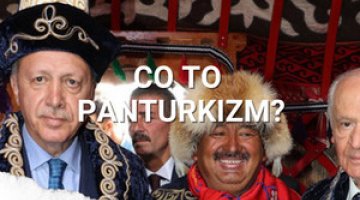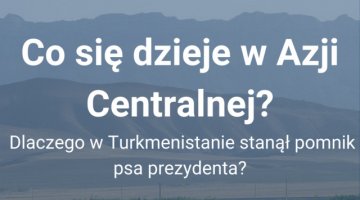EU–Central Asia summit in Samarkand: the economy comes first
The first European Union-Central Asia summit was held in Samarkand on 3–4 April, bringing together the heads of EU institutions and the presidents of Kazakhstan, Kyrgyzstan, Tajikistan, Turkmenistan, and Uzbekistan. The EU was represented by European Commission President Ursula von der Leyen, President of the European Council António Costa, the Vice-President of the European Investment Bank (EIB) and the President of the European Bank for Reconstruction and Development (EBRD). In a joint declaration issued following the summit, both sides announced that they had elevated their relationship to a ‘strategic partnership’, with particular emphasis on cooperation in the exploration of critical raw materials (The Declaration of Intent was signed in this area), transport, green energy, and satellite connectivity. The EU’s leaders unveiled a €12 billion investment package to support projects in these sectors. The EIB also signed four memoranda with Kyrgyzstan, Tajikistan, and Uzbekistan for infrastructural and environmental projects under the EU’s Global Gateway strategy, totalling €365 million.
The EU and Central Asian leaders called for ‘achieving a just and lasting peace in Ukraine’ and reaffirmed the principle of respect for sovereignty and territorial integrity as a core tenet of international relations. The EU also endorsed efforts by Uzbekistan and Kazakhstan to stabilise the situation in Afghanistan, carried out within the UN framework. The summit also resulted in a commitment to launch dialogue on countering terrorism, extremism, and disinformation.
Economic issues dominated the summit’s agenda, reflecting a shift in the EU’s approach that aligns with the expectations of the Central Asian states. The relationship now focuses on targeted cooperation, particularly in areas such as raw materials and transport, which have been expanding since Russia’s full-scale invasion of Ukraine. The EU’s offer does not undermine the region’s close ties with Russia and China, but rather contributes to the diversification of its external partnerships. In this sense, it is both feasible and realistic.
Commentary
- The summit has injected new momentum into EU-Central Asia relations by underpinning cooperation with tangible financial commitments. The countries in the region have so far viewed the EU’s offer of cooperation as weaker than that of its key member states, such as Germany and France, primarily due to its limited investment component, which was frequently linked to progress in democratising authoritarian governance. The prominent role of European financial institutions in Samarkand signalled an effort to change this situation; for example, in 2024 the EBRD invested a record €2.26 billion across 121 projects in the region. The decision to establish a regional office of the EIB in Uzbekistan marked a significant step forward. While democratisation was described as a ‘core’ issue, it was not cited as a precondition for cooperation. Nevertheless, any progress in this area will facilitate the further expansion of relations under a ‘more for more’ formula. The summit also avoided any language relating to the region’s close ties with Russia and China, particularly in the area of security, which both the Central Asian states, as well as Russia and China, might have perceived as controversial. Once again, they declared their commitment to cooperation in preventing the circumvention of sanctions via the region’s territory (without naming Russia as a beneficiary), with a particular focus on the re-export of goods.
- The summit has confirmed the evolving nature of EU-Central Asia relations, highlighting the growing importance of the economic dimension, which gained momentum in 2022–23 (see ‘Crisis as an opportunity. A new stage in EU-Central Asia relations’). Countries in the region –particularly Kazakhstan and Uzbekistan – have become more significant partners for the EU and its member states due to increased exports of oil and uranium, a shift facilitated by their cautious stance on the war in Ukraine. One area with strong potential for cooperation is the sector of critical raw materials, such as manganese ore, cobalt, and lithium. Unlike oil and uranium deposits, these resources have not yet become the focus of intense competition. For the EU, securing access to them is a priority in light of its energy transition plans. The EU has proposed a model of cooperation that combines job creation with technology transfers – a framework that aligns with the priorities of the Central Asian states. These resources would be transported via the Trans-Caspian International Transport Route, also known as the Middle Corridor, which bypasses Russia.
- The new investment package expands the EU’s Global Gateway strategy aimed at Central Asia, aligning with the objectives of the European Green Deal and the EU’s Critical Raw Materials Action Plan. The package allocates €6.4 billion for environmental projects, including hydropower; €3 billion for the development of the Middle Corridor; €2.5 billion for the exploration and extraction of critical raw materials; and €100 million for satellite connectivity. These funds constitute a total pool available through various financial and credit instruments. In early June, a joint investment forum will be held in Uzbekistan to encourage private sector involvement in these initiatives. The success of the planned projects will depend primarily on effective implementation and the absence of disruptive actions by Russia and China. For the Central Asian states, both actors remain key reference points: Russia in the political and security sphere, and China as their main trading partner, whose political influence is steadily growing.



